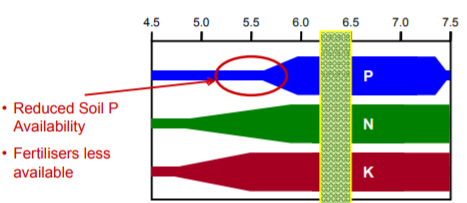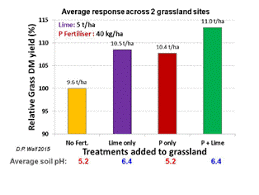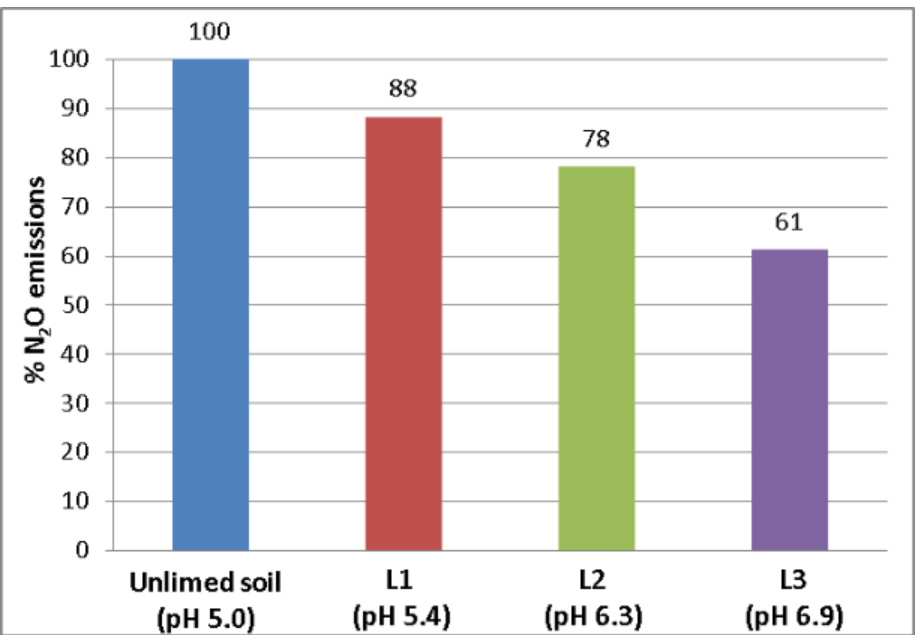The benefits of spreading lime
Liming is essential to soil fertility. Lime is a soil conditioner that corrects soil acidity by neutralising the acids present and allowing the micro-organisms and earthworms to thrive.
These then break down animal manures and organic matter increasing the nutrients cycling in the soil, while also promoting organisms such as earthworms which improve aeration and soil structure.
Soil pH is critical for maximising the availability of nutrients from our organic and inorganic inputs. Unfortunately lime is continuously being lost from our soils and therefore needs to be replaced. Drainage water, crops and livestock and nitrogen inputs (CAN or Urea) all remove lime from the soil.
- Every 10,000 litres of milk produced removes approximately 30kg/ha of lime.
- Lighter soils will lose lime quicker then heavy clay soils and will require more attention, especially in soils where limestone is absent.
- Typical average lime requirement of 2.5-5.0 t/ha once every 5 years depending on location, soil type and rainfall.

The Benefits of Liming
- Increase Nutrient cycling in the soil
- Grassland soils release up to 80kg N/ha once restored to soil pH 6.3
- Increased nutrient use efficiency reduces the risk of nutrient losses to water
- Maintaining the correct soil pH is critical for nutrient availability of soil P and K
- Increased survival and productivity of rye grasses and clover
- Increases earthworm activity which improves soil structure
- Research shows where soil pH was lifted from pH 5.5 to 6.3 grass produced increased by at least an extra 1.0 tonne DM/ha annually
- Increased grass production from lime is worth at least €161/ha/yea

The importance of lime for Grassland Production
- Increased grass production by 1t/ha by increase soil pH from 5.2 to 6.3
- Applying 5t/ha ground limestone will achieve similar grass yields to applying 40 kg/ha of P fertiliser alone on low pH soils
- Applying lime and P fertiliser in combination produced the largest grass yield response (1.5 t/ha more grass than the control in the season of application)
- Lime increases the availability of both stored soil P and freshly applied fertiliser
When to Apply Lime:
- Lime can be applied at any time of the year, when grass cover is low, however, mid-summer and autumn are ideal as soils are dryer and firm, there are increased spreading opportunities post silage as there is less interference with slurry or N fertiliser applications
- Leave at least 3 months between liming and silage harvest
- Where slurry is applied first, lime can be applied in 10 days.
- Where lime is applied first, one must wait 3 months before applying slurry / Urea. This is to reduce the risk of N loss as lime will accelerate the loss of N.
- Livestock can graze paddocks once lime has been washed in, allow 7-10 days for lime to be washed in
- The rate of application is determined by soil analysis. The lime requirement is shown on the analysis report
- Don’t apply more than 7.5t/ha (3t/acre) in a single application
- Where lime requirements are greater than 7.5t/ha, apply 7.5t/ha initially, and then apply the remainder after two years
Lime a Win-Win
Recent research carried out recently has shown that soils that have increased soil pH through the application of lime, have significantly reduced the amount of Nitrous Oxide (N20) released into our atmosphere. N2O is a potent greenhouse with agriculture emitting 90% of Irelands N2O emissions. So by correcting liming we increase grassland production and promote the nutrient and life cycles in the soil but also reduces N2O emissions creating a win-win scenario.
 First Published: June 1 2021
First Published: June 1 2021
